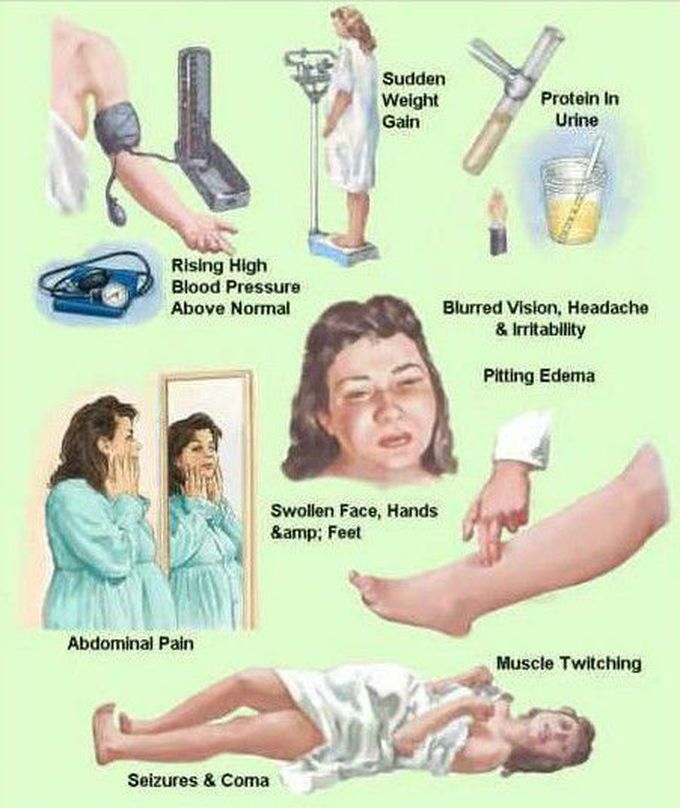


PREECLAMPSIA and ECLAMPSIA
Preeclampsia is a condition that begins during pregnancy, usually after the 20th week. However, the symptoms and signs of preeclampsia may persist after delivery, and rarely the condition might not be recognized until after the baby is born. A woman with preeclampsia develops high blood pressure and usually protein in her urine, and she often has swelling (edema) of the legs, hands, face, or entire body. When preeclampsia becomes severe, it can cause dangerous complications for the mother and the fetus. One of these complications is eclampsia, the term used when seizures develop in a woman with severe preeclampsia. Another concern is the higher risk of stroke during pregnancy and after delivery. The best hypothesis is that preeclampsia occurs when the placenta does not anchor itself as deeply as expected within the wall of the uterus during the first trimester. What causes this abnormal anchoring is unclear, but it may be influenced by the mother's or father's genes or the mother's immune system, and medical conditions the mother may have, such as diabetes or high blood pressure. Eclampsia and, especially, death from preeclampsia are very rare in well-resourced countries like the United States. However, even with the best care, preeclampsia is a leading cause of illness for mothers and newborns


